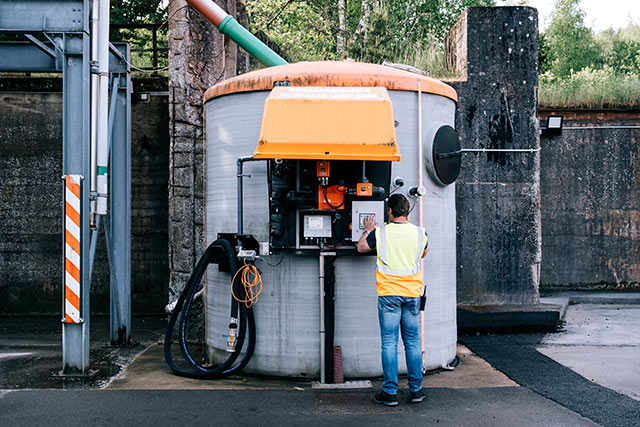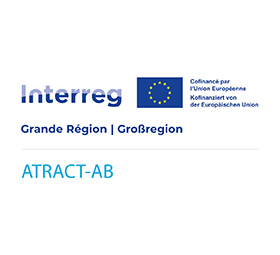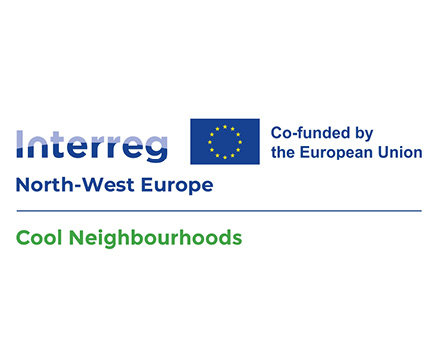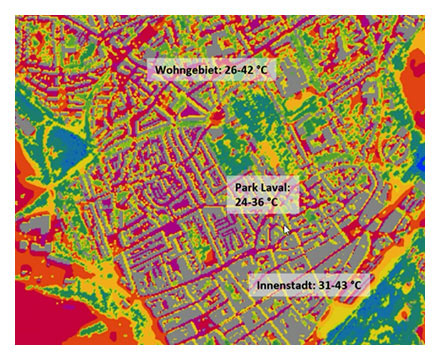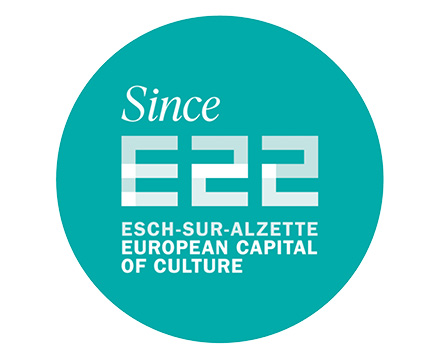 REPLACE SALT
REPLACE SALT


Snow removal in the city
Snow removal salt goes into the sewage system to be treated in a wastewater treatment plant. However, some residues manage to mix with the water of the Alzette. To avoid too great an impact of snow removal techniques on our natural environment, certain practices are applied by the city’s municipal services. Interview with Marc Kollmesch, head of the hygiene and recycling department of the city of Esch-sur-Alzette.
Mr. Kollmesch, you are team leader at the hygiene and recycling department of the city of Esch-sur-Alzette. That’s why you are also responsible for the snow clearing service. Can you give us more details on this last point?
Marc Kollmesch: I have been in the business for almost 28 years now, so to speak. Snow removal practices have not changed much. For example, winters have become less severe over the last ten years, with fewer heavy snowfalls or extreme icy conditions.
How is the service organised in the event of snowfall, for example?
Marc Kollmesch: Usually we are contacted by the Ponts & Chaussées, which issues a general alert for the canton of Esch-sur-Alzette. Each local or communal duty manager then takes responsibility for mobilising his or her teams, or not. As far as the City of Esch is concerned, we have an order of priority concerning the roads or other access paths to be cleared of snow: we take into account the traffic, the importance of the artery or the danger due to the slope. This order of priority must be maintained, without exception, in order to ensure that traffic flows smoothly and safely. Safety is the main objective.
Out of respect for the environment, we do not carry out preventive salting. The salt dumped on the roads ends up in the Alzette in one way or another, even after being treated by a treatment plant. In order to minimise any impact on our natural environment, we reduce the amount of salt dumped as much as possible. This is why we only clear snow when it is snowing or icy.
Can you tell us how your teams work?
Marc Kollmesch: Usually we are contacted by the Ponts & Chaussées, which issues a general alert for the canton of Esch-sur-Alzette. Each local or communal service manager then takes responsibility for mobilising his or her teams, or not. As far as the City of Esch is concerned, we have an order of priority concerning the roads or other access paths to be cleared of snow: we take into account the traffic, the importance of the artery or the danger due to the slope. This order of priority must be maintained, without exception, in order to ensure that traffic flows smoothly and safely. Safety is the main objective.
Out of respect for the environment, we do not carry out preventive salting. The salt dumped on the roads ends up in the Alzette in one way or another, even after being treated by a treatment plant. In order to minimise any impact on our natural environment, we reduce the amount of salt dumped as much as possible. This is why we only clear snow when it is snowing or icy.
Can you tell us how your teams work?
Marc Kollmesch: We have a permanent staff of around twenty people ready to intervene, as well as three vehicles equipped with salting equipment. In the event of snowfall, we use practically only salt, between 5 and 15 grams per square metre. In case of ice, we use a salt solution, which is a mixture of water and salt. The salt needs to be in a moist environment to be able to fully develop its effect. Snow provides the necessary moisture. If there is ice, water must be added to ensure that the salting is effective.
Would you also advise citizens to do this?
Marc Kollmesch: I would advise citizens to use only commercially available de-icing salt in all circumstances. In order to reduce the environmental impact to a minimum, a weight of 5 to 15 grams per square metre is recommended. There is no point in over-salting. What is important is that the salt is well distributed. 5 grams per square metre in the case of ice and light snowfall, 15 grams to combat larger volumes. I suggest taking a good handful of salt and weighing it, so that everyone can easily see how much to use. We also advise against preventive salting.
What is the best way to proceed?
Marc Kollmesch: First of all, the snow should be cleared with a shovel or broom, so that a passageway is created for pedestrians or wheelchair users. Once the passageway has been cleared, it should be salted, taking care to respect the grammage and especially the distribution. I would remind you that, according to the municipal regulations, each citizen is responsible for his or her part of the pavement. The municipality is responsible for the roads and other public paths, while residents are responsible for their doorsteps and the various accesses in the event of an accident or fall on their property.
What practices should be avoided?
Marc Kollmesch: The first thing to avoid is washing your pavement when there is a risk of frost. Some people are in the habit of cleaning their pavement every day. It is better not to do this when there is a risk of frost. Clearing snow with hot water or defrosting windscreens with hot water is also not recommended. They can lead to slippery surfaces once the water has cooled and iced over.
What message would you like to convey to the public?
Marc Kollmesch: First of all, clear the pavement well before salting. Secondly, salt the pavement in a measured way, taking care to distribute the salt evenly. Do not use water during frosty periods and finally know your rights and obligations. The municipal regulations, which can be found on the website of your municipality, clearly inform you of your rights and obligations as a citizen. As far as the clearing of snow on the roads is concerned, there is reason to be patient. The municipality follows a priority order of snow removal which has been set in the interest of all. It is also important to equip your vehicle with snow tyres.
How many tonnes of salt have been used in Esch in recent winters?
Marc Kollmesch: This winter (2021-2022), we used about 60 tons of salt. That’s not much compared to previous years. I tend to think that this is due to global warming.
Are there alternatives to salt?
Marc Kollmesch: Some countries use other methods, such as gravel. But for our regions, and taking into account our weather situation, salt, or even saline solution, remains the most effective and cleanest solution.
To preserve our environment, a few simple gestures are enough. Avoid preventive salting, clear the snow well before salting and finally salt sparingly.





